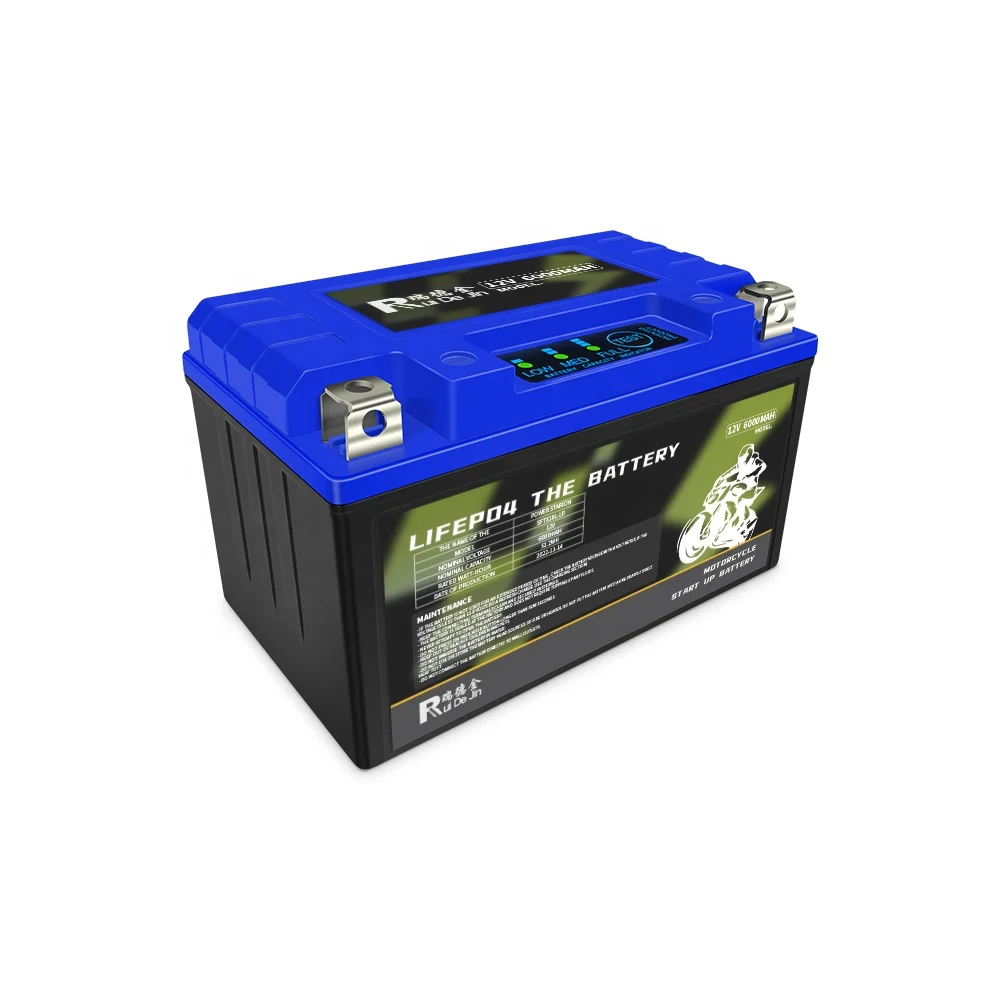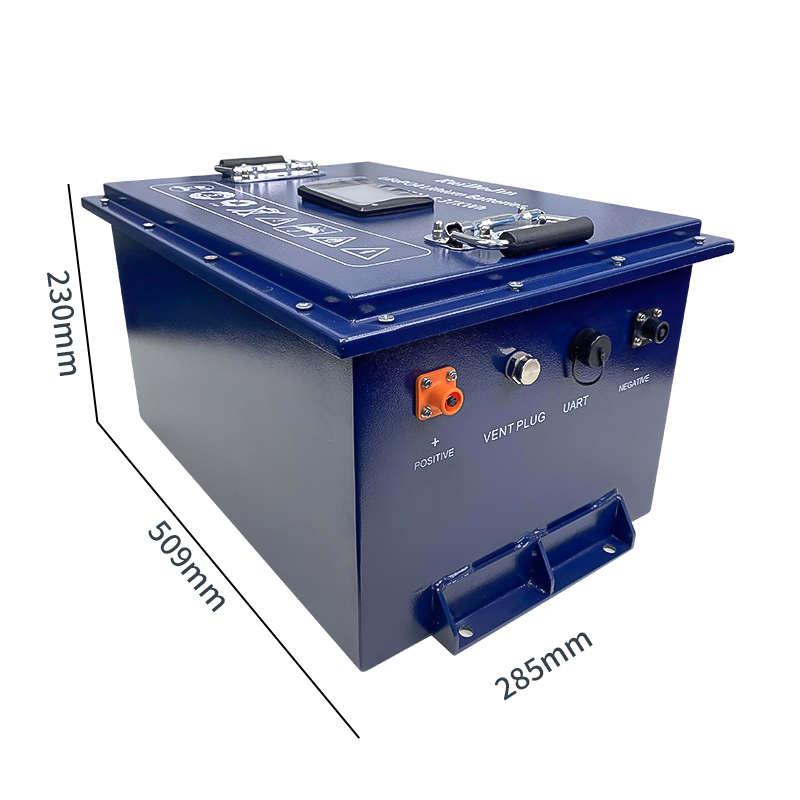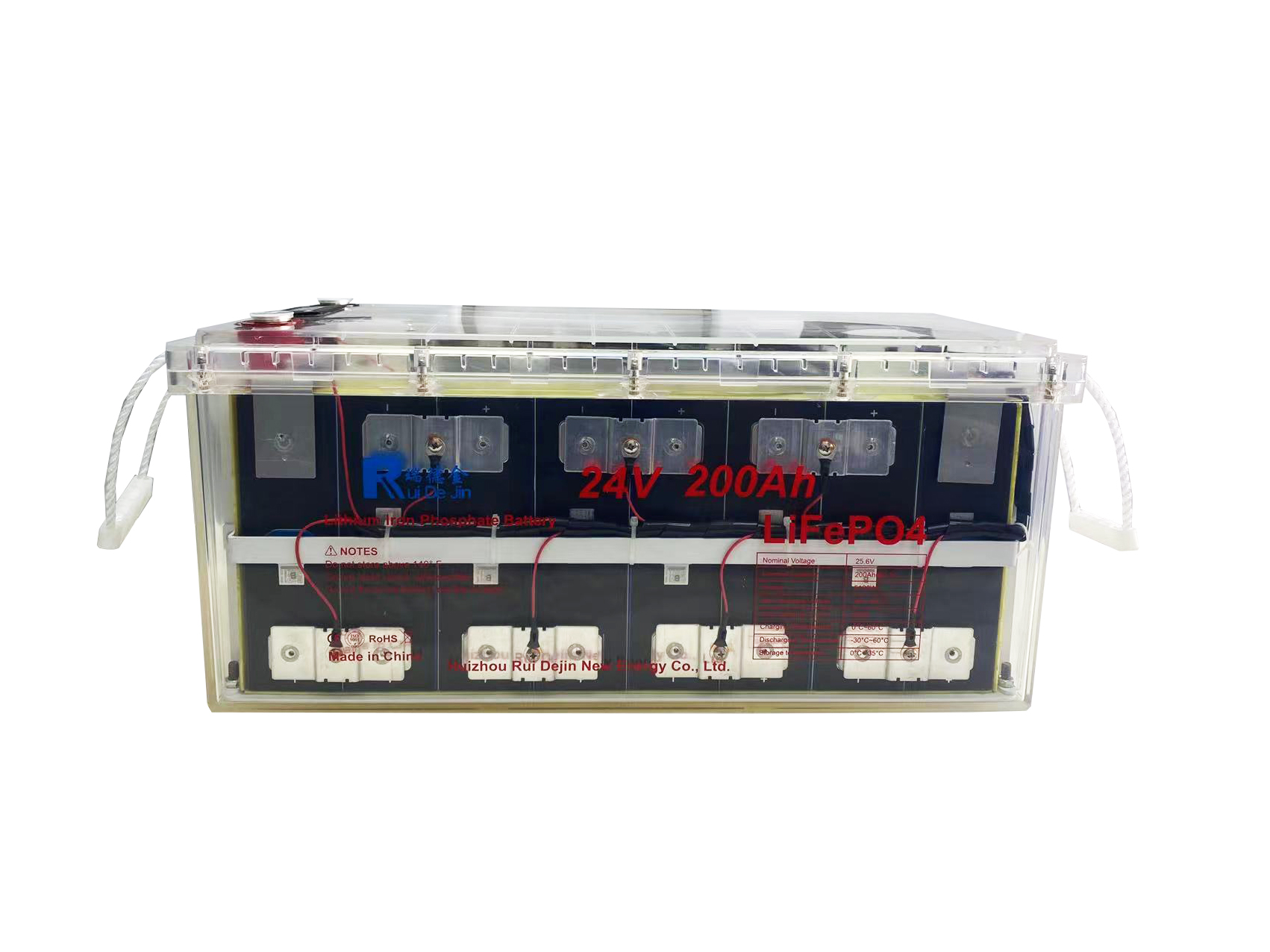On March 11th, the China Automotive Power Battery Industry Innovation Alliance released monthly data on power batteries for February 2024. In terms of production, from January to February, China’s power battery industry saw overall growth, but due to the impact of the Spring Festival holiday, the market conditions for power battery production, sales, and installation in February were poor.
In February, the total production of power and other batteries in China was 43.6GWh, a decrease of 33.1% month on month and 3.6% year-on-year.
From January to February, the cumulative production of power and other batteries in China was 108.8 GWh, a year-on-year increase of 29.5%.
In terms of sales, in February, the total sales of power and other batteries in China were 37.4GWh, a decrease of 34.6% month on month and 10.1% year-on-year. Among them, the sales volume of power batteries was 33.5GWh, accounting for 89.8%, a month on month decrease of 33.4%, and a year-on-year decrease of 7.6%; The sales volume of other batteries was 3.8GWh, accounting for 10.2%, a decrease of 43.2% month on month and 27.0% year-on-year.
From January to February, the cumulative sales of power and other batteries in China reached 94.5 GWh, a year-on-year increase of 26.4%. Among them, the cumulative sales of power batteries were 83.9GWh, accounting for 88.8%, with a cumulative year-on-year increase of 31.3%; The cumulative sales of other batteries were 10.6GWh, accounting for 11.2%, a year-on-year decrease of 2.3%.
In terms of loading volume, in February, the loading volume of power batteries in China was 18.0 GWh, a year-on-year decrease of 18.1% and a month on month decrease of 44.4%. The installed capacity of ternary batteries was 6.9 GWh, accounting for 38.7% of the total installed capacity, a year-on-year increase of 3.3%, and a month on month decrease of 44.9%; The installed capacity of lithium iron phosphate batteries is 11.0 GWh, accounting for 61.3% of the total installed capacity, a year-on-year decrease of 27.5% and a month on month decrease of 44.1%.
In February, a total of 36 power battery companies in China’s new energy vehicle market achieved vehicle installation support, a decrease of 3 compared to the same period last year. The top 3, top 5, and top 10 power battery companies have installed 14.1GWh, 15.3GWh, and 17.4GWh of power batteries, accounting for 78.6%, 85.3%, and 96.7% of the total installed vehicles, respectively. The proportion of the top 10 companies decreased by 1.7 percentage points compared to the same period last year.
Top 15 domestic power battery companies in terms of vehicle installation volume in February
In February, the top 15 domestic power battery companies in terms of installed vehicles were: CATL (9.82 GWh, accounting for 55.16%), BYD (3.16 GWh, accounting for 17.75%), Zhongchuangxin Aviation (1.14 GWh, accounting for 6.38%), Yiwei Lithium Energy (0.63 GWh, accounting for 3.52%), Xinwangda (0.58 GWh, accounting for 3.25%), Guoxuan High tech (0.53 GWh, accounting for 2.95%), Ruipu Lanjun (0.46 GWh, accounting for 2.58%), Honeycomb Energy (0.42 GWh, accounting for 2.35%), and LG New Energy (0.33 GWh, accounting for 2.35%). 6GWh (accounting for 2.00%), Jidian New Energy (0.30GWh, accounting for 1.70%), Zhengli New Energy (0.18GWh, accounting for 1.01%), Polyfluoro (0.10GWh, accounting for 0.57%), Funeng Technology (0.08GWh, accounting for 0.46%), Henan Lithium Power (0.01GWh, accounting for 0.06%), and Anchi New Energy (0.01GWh, accounting for 0.06%).
From January to February, the cumulative installed volume of power batteries in China was 50.3GWh, a year-on-year increase of 32.0%. The cumulative installed capacity of ternary batteries is 19.5Wh, accounting for 38.9% of the total installed capacity, with a cumulative year-on-year increase of 60.8%; The cumulative installed capacity of lithium iron phosphate batteries is 30.7 GWh, accounting for 61.1% of the total installed capacity, with a cumulative year-on-year increase of 18.6%.
From January to February, a total of 41 power battery companies in China’s new energy vehicle market achieved vehicle installation support, an increase of 2 compared to last year. The top 3, top 5, and top 10 power battery companies have installed 37.8 GWh, 41.9 GWh, and 48.2 GWh of power batteries, accounting for 75.2%, 83.3%, and 95.9% of the total installed vehicles, respectively.
Top 15 domestic power battery companies in terms of vehicle installation volume from January to February
From January to February, the top 15 domestic power battery companies in terms of vehicle installation volume were Ningde Times (25.77 GWh, accounting for 51.75%), BYD (9.16 GWh, accounting for 18.39%), Zhongchuangxin Aviation (2.88 GWh, accounting for 5.79%), Guoxuan High tech (2.09 GWh, accounting for 4.19%), Yiwei Lithium Energy (1.98 GWh, accounting for 3.97%), Honeycomb Energy (1.89 GWh, accounting for 3.80%), Xinwangda (1.52 GWh, accounting for 3.05%), LG New Energy (1.22 GWh, accounting for 2.44%), and Ruipu Lanjun Energy. (1.09 GWh, accounting for 2.20%), Jidian New Energy (0.61 GWh, accounting for 1.23%), Zhengli New Energy (0.58 GWh, accounting for 1.16%), Funeng Technology (0.44 GWh, accounting for 0.88%), Duofuduo (0.31 GWh, accounting for 0.63%), Penghui Energy (0.04 GWh, accounting for 0.09%), and Anchi New Energy (0.03GWh, accounting for 0.06%).
In terms of average charged capacity of bicycles, in February, the average charged capacity of new energy bicycles in China was 49.5kWh, a month on month increase of 9.3%. The average charged capacity of pure electric passenger cars and plug-in hybrid passenger cars were 58.5kWh and 28.8kWh, respectively, a month on month increase of 12.3% and a decrease of 0.2%.
From January to February, the average charged capacity of new energy vehicles in China was 46.7 kWh. The average charged capacity of new energy passenger vehicles, buses, and specialized vehicles per vehicle is 44.1kWh, 161.4kWh, and 96.3kWh, respectively.
In terms of the installation volume of solid-state batteries and sodium ion batteries, from January to February, China achieved the installation of semi-solid batteries and sodium ion batteries. The supporting battery companies are Weilan New Energy and Ningde Times.
In February, the installed capacity of sodium ion batteries was 253.17kWh, and the installed capacity of semi-solid batteries was 166.6MWh; From January to February, sodium ion batteries were loaded with 703.3kWh and semi-solid batteries were loaded with 458.2MWh.
In terms of exports, in February, China’s total exports of power and other batteries were 8.2GWh, a decrease of 1.6% month on month and 18.0% year-on-year, accounting for 22.0% of the month’s sales. Among them, the export of power batteries was 8.1GWh, accounting for 98.6%, a decrease of 0.7% month on month and a year-on-year decrease of 10.9%. The export of other batteries was 0.1GWh, accounting for 1.4%, a decrease of 38.2% month on month and 87.2% year-on-year.
From January to February, the cumulative export of power and other batteries in China reached 16.6 GWh, accounting for 17.6% of the cumulative sales in the first two months and a year-on-year decrease of 13.8%. Among them, the cumulative export of power batteries was 16.3GWh, accounting for 98.1%, a year-on-year decrease of 1.9%; The cumulative export of other batteries was 0.3GWh, accounting for 1.9%, a year-on-year decrease of 88.2%.
In addition, regarding the export of new energy vehicles, according to data from the China Association of Automobile Manufacturers, in February, the export of new energy vehicles reached 82000 units, a decrease of 18.5% month on month and 5.9% year-on-year. Among them, the export of pure electric vehicles reached 66000 units, a decrease of 19.1% month on month and 19.4% year-on-year; 16000 plug-in hybrid vehicles were exported, a month on month decrease of 15.5% and a year-on-year increase of 2.3 times.
From January to February, the export of new energy vehicles reached 182000 units, a year-on-year increase of 7.5%. Among them, 148000 pure electric vehicles were exported, a year-on-year decrease of 7.5%; 34000 plug-in hybrid vehicles were exported, a year-on-year increase of 2.7 times.
In terms of new energy passenger vehicle exports, according to the China Association of Automobile Manufacturers, the export of new energy passenger vehicles in February was 79000 units, a year-on-year increase of 0.1% and a month on month decrease of 20.0%, accounting for 26.4% of passenger vehicle exports, a decrease of 4.8 percentage points compared to the same period last year; Among them, pure electric accounts for 81.4% of new energy exports, and A0+A00 level pure electric exports account for 53% of domestic new energy exports.
Specifically, in February, Tesla China exported 30224 vehicles, BYD Automobile exported 23291 vehicles, SAIC GM Wuling exported 2872 vehicles, SAIC Passenger Vehicle exported 2407 vehicles, Chery Automobile exported 2387 vehicles, Zhima Motor Automobile exported 2220 vehicles, Geely Automobile exported 2144 vehicles, Nezha Automobile exported 1695 vehicles, Changan Automobile exported 1486 vehicles, GAC Trumpchi exported 1314 vehicles, GAC Aion exported 1296 vehicles, Brilliance BMW exported 1201 vehicles, Great Wall Automobile exported 1058 vehicles, Jianghuai Automobile exported 1001 vehicles, Selis Automobile exported 898 vehicles, Dongfeng Honda exported 792 vehicles, and Jixing Automobile exported. 774 vehicles and 708 vehicles exported by Xiaopeng Motors.
The China Association of Automobile Manufacturers stated that with the scale advantage and market expansion demand of China’s new energy, more and more Chinese made new energy product brands are going abroad, and their recognition overseas continues to increase. Although they have been affected by some interference from Europe recently, the new energy export market is still promising in the long run, with a bright future.
In 2023, China became the world’s largest automobile exporter for the first time. In order to protect the favorable situation of China’s automobile exports, several automotive industry leaders have recently provided suggestions and suggestions on automobile exports during the Two Sessions.
Yin Tongyue, a National People’s Congress representative and Party Secretary and Chairman of Chery Holding Group, proposed at the 2024 National People’s Congress to strengthen the construction of the automobile export management system. The specific details are as follows: (1) The Ministry of Commerce takes the lead in formulating quality standards and certification mechanisms for automobile export products, conducting “health level” inspections on all automobile export enterprises, and investigating the profitability, quality level, service network layout, personnel training and management of enterprises. (2) The Ministry of Foreign Affairs, the Ministry of Commerce, the Central Cyberspace Administration, and other organizations are promoting the establishment of an international standard system for automotive data and information security, and appropriately improving data security standards; First, we will promote mutual recognition of data standards in BRICS countries and the “the Belt and Road” countries, and explore the establishment of a mutual recognition mechanism of data standards with the EU, the United States and other countries and regions. (3) The Ministry of Commerce takes the lead in improving the definition and refining standards for the export of “used cars”, changing the current situation where one-time transfer of ownership is considered as “used cars”, prohibiting the export of Chinese automotive brands that have not completed the localization of overseas market regulations and qualification certification, and disrupting the market with “zero” kilometers of used cars, to avoid product quality and after-sales service problems. At the same time, lead the establishment of a brand foundation, and each export enterprise pays a certain amount of brand deposit. When certain brands exit overseas markets in the future, the foundation will continue to provide quality and after-sales service guarantees for overseas users, jointly maintaining the international image of Chinese brands. (4) The Ministry of Commerce and the Ministry of Industry and Information Technology will coordinate and plan to encourage and support Chinese automotive brands to “go global” through the CKD (all loose parts) approach; Introduce policies to support top enterprises in leading the construction of China’s overseas automotive industrial parks, reduce trade conflicts and geopolitical influences, and further expand the scale of China’s automotive exports.
Feng Xingya, a National People’s Congress representative and General Manager of GAC Group, brought five suggestions and one proposal regarding automobile exports. Feng Xingya stated that automobile exports have become an important engine driving the growth of automobile production and sales. However, due to the accelerated follow-up of overseas brands and the complex business environment, automobile exports still face enormous pressure and urgently require assistance from the government. Therefore, Feng Xingya proposed suggestions to promote international industrial cooperation, coordinate common export issues, optimize export supervision mechanisms, strengthen information and transportation capacity construction, and take multiple measures to safeguard high-quality development at sea.
In response to the current situation of China’s new energy vehicle exports to Europe, Zhang Xinghai, member of the Standing Committee of the National Committee of the Chinese People’s Political Consultative Conference, Vice Chairman of the All China Federation of Industry and Commerce, Chairman of the Chongqing Federation of Industry and Commerce, and Chairman of the Seles Group, suggested that relevant departments promote international mutual recognition of automotive carbon footprint accounting standards, methods, and data, especially strengthen low-carbon development cooperation with the European Union, and eliminate carbon emission related obstacles for China’s new energy vehicle exports to Europe. At the same time, drawing on the advanced carbon footprint accounting experience of the European Union, domestic automotive carbon footprint accounting work should be guided; Conduct in-depth research on overseas component companies, identify potential and active component companies, especially providing financial and tax support for private component companies, encourage high-quality supply chains to go overseas, and collaborate with high-quality automotive companies to develop overseas, leveraging the comprehensive competitiveness of Chinese automobiles in the supply side, manufacturing side, and product side; Establish a national level terminal consumer credit financial platform to provide credit funds and loan service support to overseas independent car companies, ensuring that independent car companies do not have obvious financial policy disadvantages in competition with foreign car companies overseas.
Post time: Mar-20-2024



